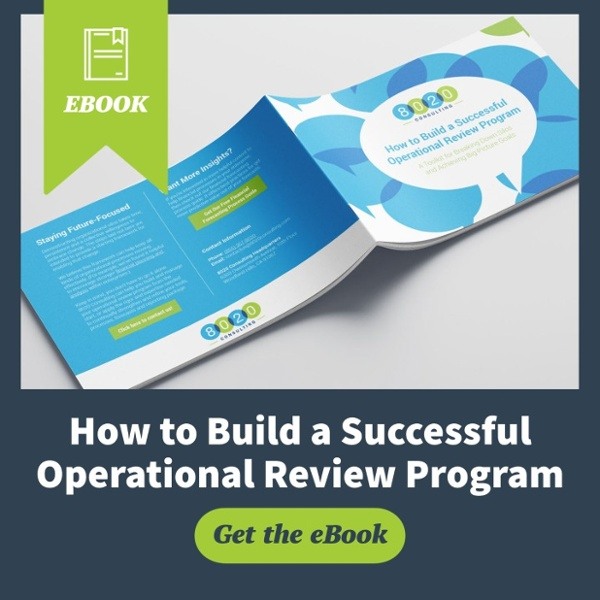For most companies, headcount is one of the most important assets, and more often than not, it is also the single largest expense. Proper management of headcount is essential to achieving a company’s growth objectives or cost savings targets. Given the vital importance of headcount to the success of any business, one would expect that the proper management and tracking of the workforce and related expenses would be a fine-tuned process. In my experience, this has proven not to be the case. In fact, headcount management has consistently been one of the major pain points for many clients from the largest Fortune-100 company to the smallest startup.
Over and over again, I have found surprisingly unsophisticated methods for tracking headcount and related data and a lack of company-wide reporting. Inefficient and faulty methods of tracking often result in error-prone data that consumes excessive time and energy from staff that should be focused elsewhere. Management lacks an accurate view of headcount and is therefore missing key pieces of information they need to guide the business.
Is one of your company’s pain points headcount tracking? Here are five signs that headcount management is holding your company back:
Your headcount management lives in Excel, Google Sheets or a spreadsheet.
It’s normal for a new company to keep track of headcount, salaries and related data in a spreadsheet. With only a handful of positions in a small company, it’s straightforward and inexpensive to have one person keep track of things. That person likely knows and has direct contact with most, or all, of the other employees, which makes tracking a manageable task.
As companies grow, a tracking system owned by one person becomes much more difficult to maintain. With dozens or hundreds of open roles, just keeping a spreadsheet updated with the latest information can easily become a full-time job. Broken formulas or input errors can easily creep into the file rendering the data suspect or unreliable. Moving beyond a spreadsheet to a Position Management System is a step many clients choose to solve these issues.
Position Management Systems are able to track the position and not just the employee who is currently filling the role. If someone leaves or moves to a new role in a different department, the position remains and is filled by someone new. This allows the organizational structure to be easily modified and remain up to date regardless of the constant changes within the company. Systems such as Workday, SyncHR and Built For Teams offer Position Management functionality that can be an incredibly powerful tool in eliminating most of the manual work and automating headcount tracking.
You don’t know your Headcount KPIs.
One of my recent projects was to create a monthly headcount report for senior management. This public company had almost 10,000 employees, but it did not have any reporting that looked at the hiring metrics of the entire company. Headcount reporting was handled by the Human Resources department, which was not traditionally focused on metrics. This left senior executives unable to answer such basic questions as the number of open roles at the company, the time-to-hire new employees, monthly attrition or whether the company was on track to achieve its full year hiring target.
Bringing in an experienced FP&A professional to develop data-driven KPIs gave management the information they needed to make informed decisions about the strategic direction of the company. With those KPIs in hand, decision makers can move the company forward, and the finance team can support the HR department with important insight they haven’t had before.
Your company is growing rapidly.
With company growth, particularly growth that happens very rapidly and continues over an extended period of time, headcount policies and procedures that may have worked well with a few hundred employees simply can’t scale to handle thousands.
At one point, a simple email or Slack message might have been all that was required to approve a new hire. As companies become larger and more sophisticated, multiple approvals may be needed across different departments—rendering email and Slack insufficient. At this point, it becomes vital to create new processes and workflows that can handle the increased volume of communications and still achieve a company’s hiring goals. In the case of many clients who are experiencing rapid growth, a Position Management System is the best solution to achieving their long-term hiring goals.
Headcount management is handled separately by different teams or departments within the company.
This is very common in larger companies and growing businesses, where the management by a single individual has become untenable. The headcount responsibilities are divided out, and subsequently, each team develops their own methodology and process that often doesn’t correspond to the way other teams track and document the data.
For example, each team might have a slightly different way of assigning Position IDs or calculating time-to-hire. While that might work for each department or team, when you begin looking at the company holistically, the inconsistent tracking methods and unaligned data become a problem.
The finance team can play an important role in addressing many of these issues. Finance often owns the headcount tracking process and can leverage its knowledge to consolidate tracking in one place creating a “single source of truth” that standardizes calculations and procedures.
You hire to solve short-term problems rather than to support long-term objectives.
Most teams are focused on addressing immediate concerns. For example, when an employee leaves the company or the workload suddenly increases, the goal is often to hire someone as quickly as possible, so the rest of the team doesn’t suffer burnout. However, solving for immediate needs may not always be the best solution for a company’s long-term objectives. Rather than immediately backfilling the position, it might be in the company’s interest to redistribute the work to other departments or to restructure the team.
Without a proper headcount management process, management often lacks visibility into these types of individual hiring decisions. Implementing better processes and systems can enable companies to solve short term pain points while simultaneously address long-term company objectives.
What does good headcount planning look like?
Good headcount management may look different for each company depending upon its size and resources, but there are best practices that everyone can achieve. For a startup, a spreadsheet may be adequate for managing headcount, but it should be automated to the maximum extent possible. Integrating it with the existing HR system to allow for automatic updating of metadata can remove much of the manual work and ensure each employee’s data is current.
All companies can benefit from clear and efficient processes. Having a standardized and automated workflow or form to submit a new hire request or notify HR that an employee has given notice is essential. Trying to communicate headcount changes via email or Slack results in manual work prone to human error that can quickly become overwhelming and result in delays in the hiring process. Creating a single source of truth which tracks all headcount with standardized metrics provides management with visibility into companywide performance and improved data integrity. A Position Management System is the gold standard when properly implemented. It provides a fully automated process and near instantaneous updates that eliminates much of the potential for human error.
Improving your headcount management is an important investment in your company. Automating or eliminating manual tasks frees up resources that can be better utilized elsewhere. More efficient processes in this area can improve the time-to-hire a new employee reducing the stress on the rest of your workforce. Up-to-date headcount tracking allows for instant visibility of labor expenses and the organization structure – vital information to help management plan for the road ahead.
Learn More
If any of these points sound familiar, it’s time to invest in improved headcount management. Whether you’re looking to streamline your spreadsheet models, update processes or graduate to a Position Management System, 8020 Consulting has the experience and know-how to upgrade your headcount management and provide your company the insights it needs to achieve its objectives. We invite you to visit our FP&A page or our Financial Systems page to learn more about how we can support your company.
To explore how you can break down silos and encourage separate departments to strive for the same goals, download our free guide below:

